5th Grade Parents: Click HERE for information on how your child can join band and more FAQs.
Instrument Selection Guide
 FluteThe flute is the smallest of the beginner instruments. It is a very popular selection each year!
FluteThe flute is the smallest of the beginner instruments. It is a very popular selection each year!
Physical Characteristics: Flute players should have a slight “frown” to the upper lip with NO tear drop shape in the middle. Flute tones are produced by being able to focus an extremely small airstream to an exact location on the tone hole. The tear-drop-shaped lip will make it difficult to direct the air so precisely. Flute players should also have agile fingers for moving this multi-keyed instrument through a fast musical passage. Students with extreme overbites (receded jaw) should avoid choosing flute as this makes it difficult to produce quality sounds.
Other Considerations: Students with double-jointed fingers should avoid selecting flute as double-jointedness can cause lack of agility in the fingers.
10% of students will be selected for FLUTE.
FLUTE PERSONALITY: Conscientious
__________________________________________________________________________________________
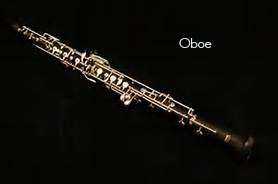
Oboe
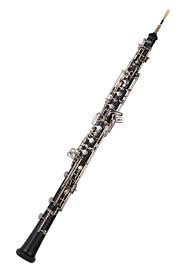
The oboe is similar in its appearance to a clarinet, but it is played using a “double reed” instead of a single reed and mouthpiece. Selection of oboe players is EXTREMELY limited. VERY few will actually be selected for oboe.
Physical Characteristics: Students with profound overbites or underbites would have EXTREME difficulties producing good sounds on the oboe since the embouchure (mouth position) requires equal pressure on both sides of the reed at the same placement.
Other Considerations: Because the oboe is such a difficult instrument to master, only students with high academic performance records will be considered. Students who choose (and are selected) to play oboe are REQUIRED to take weekly private lessons with the applied lesson teacher at Dowell. Private lessons cost $20.00 per week and scholarships are available based on financial need and demonstration of diligent work ethic. Students are required to maintain a supply of 3-4 high-quality reeds at ALL times. Students with a history of disciplinary trouble will NOT be considered for oboe.
5% of students will be selected for OBOE.
OBOE PERSONALITY: Studious
_________________________________________________________________________________________
Clarinet
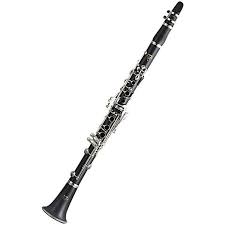 Unlike the oboe, the clarinet uses a “single reed” and a mouthpiece to produce the sound. Willingness to purchase or rent a director-recommended clarinet is a MUST! Unfortunately, there are some clarinets on the market whose poor design and craftsmanship will make it next to impossible for your student to succeed. We can help you avoid that pitfall.
Unlike the oboe, the clarinet uses a “single reed” and a mouthpiece to produce the sound. Willingness to purchase or rent a director-recommended clarinet is a MUST! Unfortunately, there are some clarinets on the market whose poor design and craftsmanship will make it next to impossible for your student to succeed. We can help you avoid that pitfall.Physical Characteristics: One necessity of clarinet tone production is the ability to make the chin flat. Orthodontia is okay, but if a student has an extremely rounded bottom row of teeth, the mouthpiece will be hard to place in the proper position for tone production.
Other Considerations: Instruction in clarinet can be meticulous. Students who are able to focus on and perform a detailed series of instructions could do well on clarinet. Students who have difficulty remembering a series of instructions should avoid playing clarinet. Clarinet players are also responsible for maintaining a working stock of 4-6 quality reeds.
20% of students will be selected for CLARINET
CLARINET PERSONALITY:
Focused
CLARINET PERSONALITY:
Focused
https://www.youtube.com/watch?v=G_PU6NavuH4
___________________________________________________________________________________________
Bassoon

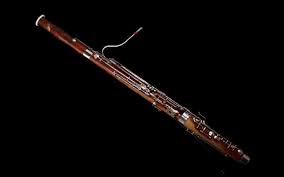 Bassoon is to the Oboe what the bass clarinet is to the clarinet. It is the larger, lower sounding version of the double reed instrument. However, bassoon students will not play oboe before switching, instead they will begin on the bassoon itself. VERY few students will be selected to play Bassoon.
Bassoon is to the Oboe what the bass clarinet is to the clarinet. It is the larger, lower sounding version of the double reed instrument. However, bassoon students will not play oboe before switching, instead they will begin on the bassoon itself. VERY few students will be selected to play Bassoon.Physical Characteristics: A slight overbite is okay for students wishing to play bassoon, however, a student with an underbite should avoid bassoon. Agile thumbs is a necessity for playing bassoon proficiently as well as a medium or greater hand span.
Other Considerations: Like the Oboe, the Bassoon is such a difficult instrument to master, only students with high academic performance records will be considered. Students who choose (and are selected) to play bassoon are REQUIRED to take weekly private lessons with the applied lesson teacher at Dowell. Private lessons cost $20.00 per week and scholarships are available based on financial need and demonstration of diligent work ethic. Students are required to maintain a supply of 3-4 high-quality reeds at ALL times.
Again, the financial trade-off for having to take lessons and keep a stock of working reeds is that Dowell provides bassoons for students at a cost of $100 rental for an entire school year payable to MISD for routine maintenance.
Again, the financial trade-off for having to take lessons and keep a stock of working reeds is that Dowell provides bassoons for students at a cost of $100 rental for an entire school year payable to MISD for routine maintenance.
5% of students will be selected for BASSOON
BASSOON PERSONALITY:
Serious
___________________________________________________________________________________________
Saxophone
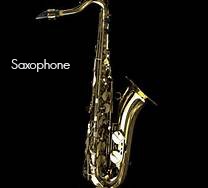
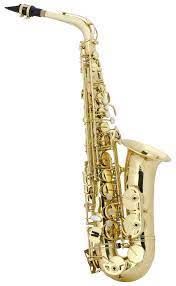 The alto saxophone gives the impression of being both a brass AND woodwind instrument, however it is indeed considered a woodwind instrument. The alto saxophone (which uses a single reed like the clarinet) is a very popular instrument like flute and only a few students will be chosen to play it.
The alto saxophone gives the impression of being both a brass AND woodwind instrument, however it is indeed considered a woodwind instrument. The alto saxophone (which uses a single reed like the clarinet) is a very popular instrument like flute and only a few students will be chosen to play it.Physical Characteristics: Since the balance of the saxophone is maintained by the use of a neck strap, it is extremely important that students be able to sit up completely straight when asked to.
Other Considerations: Saxophone players are responsible for maintaining a working stock of 4-6 quality reeds. Alto Saxophone students will have the opportunity after their first year of instruction to audition for Tenor Sax or Baritone Sax (based on their proven musical and behavioral abilities while in alto saxophone class).
8% of students will be selected for SAXOPHONE
SAXOPHONE PERSONALITY:
Mellow
Mellow
___________________________________________________________________________________________
Trumpet
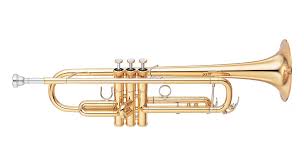 The trumpet (or cornet) is the smallest member of the brass family. The sound on trumpet is produced by buzzing into a small mouthpiece. It is the highest sounding instrument in the band.
The trumpet (or cornet) is the smallest member of the brass family. The sound on trumpet is produced by buzzing into a small mouthpiece. It is the highest sounding instrument in the band.Physical Characteristics: While orthodontia is somewhat troublesome at first to a trumpet player, it is not impossible to make good sounds with braces. A slight overbite is okay, but an underbite can severely hinder progress on trumpet. Trumpet players come in all shapes and sizes.
Other Considerations: Cornet / trumpet parts usually have the melody (recognizable) part, therefore students who choose and are selected for cornet / trumpet should exhibit a confident demeanor, strong personality, and demonstrate a high level of self-motivation.
12% of students will be selected for TRUMPET
TRUMPET PERSONALITY:
Confident
___________________________________________________________________________________________
French Horn
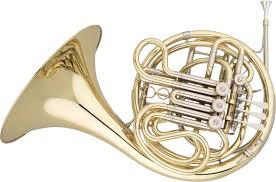 French horn is the also a member of the brass family. Its sound is produced by buzzing into a small mouthpiece similar to a trumpet. Only the top 14-16 scores will be selected to play French horn. Students with good musical ears (such as Honor Choir students) should consider French Horn.
French horn is the also a member of the brass family. Its sound is produced by buzzing into a small mouthpiece similar to a trumpet. Only the top 14-16 scores will be selected to play French horn. Students with good musical ears (such as Honor Choir students) should consider French Horn.Physical Characteristics: A slight overbite is okay, but an underbite can severely hinder progress on French Horn. Because the bell of the French horn rests on the knee of the player while playing, it is imperative that a student’s upper torso be long enough to accommodate the size of the French horn to make good sounds and that players be able to demonstrate sitting straight up when asked to do so. The French horn’s keys are manipulated with the LEFT hand.
Other Considerations: Because of the difficult nature of French horn notes (mentioned above), students should exhibit GREAT ability to match sung or played pitches by humming or singing. Perhaps this is a good instrument choice for students who have participated in piano lessons or honor choir groups. Students with a history of academic or behavioral problems will NOT be selected for French horn. Arbor Creek provides French horns for students at a cost of $100 rental for an entire school year.
10% of students will be selected for FRENCH HORN
FRENCH HORN PERSONALITY:
Academic
___________________________________________________________________________________________
Trombone
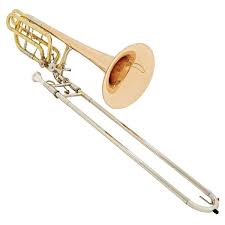 the French horn, trombone players should have good “musical ears”. The trombone is played like the other brass instruments (buzzing into a cup-shaped mouthpiece), but uses a slide instead of valves. The slide is not marked or notched and players rely on their memory and hearing to tell if they are in the EXACT proper location. Students with good musical ears (such as Honor Choir students) should consider Trombone.
the French horn, trombone players should have good “musical ears”. The trombone is played like the other brass instruments (buzzing into a cup-shaped mouthpiece), but uses a slide instead of valves. The slide is not marked or notched and players rely on their memory and hearing to tell if they are in the EXACT proper location. Students with good musical ears (such as Honor Choir students) should consider Trombone.Physical Characteristics: While some might think that trombone players must have long arms, the truth is there are numerous accommodations that make it possible for students of all shapes and sizes to play. A slight overbite is acceptable, while an extreme underbite would hinder success. Trombone players should have slightly fuller lips than average.
Other Considerations: Great trombone playing takes good concentration and study. Many quiet academicians have excelled at trombone.
12% of students will be selected for TROMBONE
TROMBONE PERSONALITY:
Analytical
Analytical
___________________________________________________________________________________________
Euphonium

 The euphonium (you-PHONE-knee-yum) is sometimes known as the baritone. It is a member of the brass family and looks like a small version of a tuba. Its sound is similar to that of a trombone, but it uses valves like a trumpet instead of a slide (like trombone).
The euphonium (you-PHONE-knee-yum) is sometimes known as the baritone. It is a member of the brass family and looks like a small version of a tuba. Its sound is similar to that of a trombone, but it uses valves like a trumpet instead of a slide (like trombone).Physical Characteristics: Euphonium players should have moderately full lips, but not too full. A SLIGHT overbite is okay, but an underbite would hinder a good sound. The euphonium requires a medium-sized hand span to reach the valves and students should have an above average lung capacity.
Other Considerations: Students with an above average amount of orthodontia will find the mouthpiece of the euphonium a bit more comfortable than trumpet or French horn. Dowell provides euphoniums for students at a cost of $100 rental for an entire school year, but students are required to purchase their own mouthpieces.
10% of students will be selected for EUPHONIUM
EUPHONIUM PERSONALITY:
Artistic_________________________________________________________________________________
Tuba

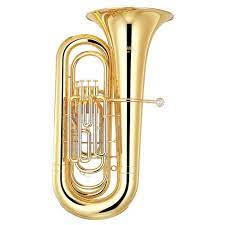 Whilew many believe the tuba is the largest instrument in the band and would be hard to physically manage, the tubas we use for beginners are ¾ size and easy to handle. In fact, tuba players will begin by playing a baritone horn and will switch over in the fall semester.
Whilew many believe the tuba is the largest instrument in the band and would be hard to physically manage, the tubas we use for beginners are ¾ size and easy to handle. In fact, tuba players will begin by playing a baritone horn and will switch over in the fall semester.Physical Characteristics: Tuba players need to have full lips and a large lung capacity. While the size of the student doesn’t matter TOO much, a long torso (upper body) helps a student reach the mouthpiece of the tuba while resting the bottom of the tuba on the edge of their chair or across the thighs.
Other Considerations: The tuba provides the musical foundation for the band and requires players that are self-motivated over-achievers. Students with a history of academic trouble should not consider tuba as we rely heavily on the ability of the tuba players to be consistently UIL eligible. Dowell provides tubas for students at a cost of $100 rental for an entire school year, but students are required to purchase their own mouthpieces.
6% of students will be selected for TUBA
TUBA PERSONALITY:
Unique
___________________________________________________________________________________________
Percussion
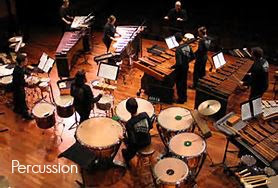 Just because you are always tapping on things does not mean you are a natural percussionist (drummer). In fact, the percussion section is the most select, hand-picked section of the band. Only students with the highest grades, lowest discipline problems, backgrounds in piano lessons, and extremely high gross and fine motor skills will be considered for percussion. Percussionists MUST rent a marimba for at home.
Just because you are always tapping on things does not mean you are a natural percussionist (drummer). In fact, the percussion section is the most select, hand-picked section of the band. Only students with the highest grades, lowest discipline problems, backgrounds in piano lessons, and extremely high gross and fine motor skills will be considered for percussion. Percussionists MUST rent a marimba for at home.Physical Characteristics: Students should exhibit a great deal of coordination in gross and fine motor skills.
Other Considerations: The study of percussion includes bells, triangle, tambourine, maracas, claves, among many other instruments.
ONLY 10-12 students will be selected for PERCUSSION
PERCUSSION PERSONALITY: Coordinated